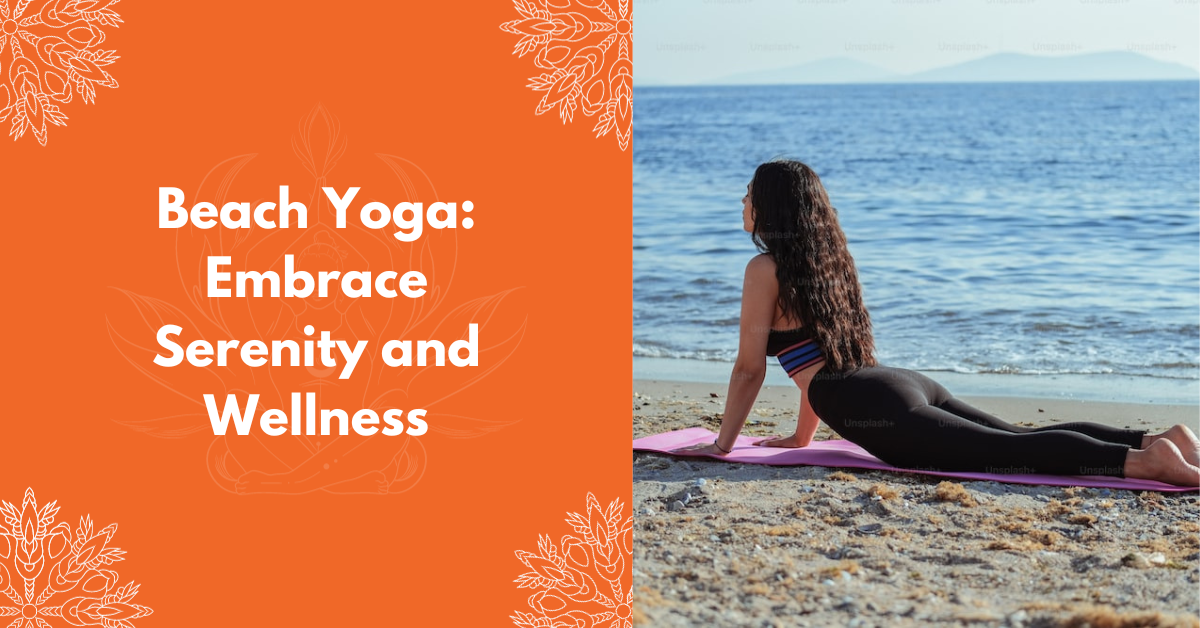
Beach Yoga: Embrace Serenity and Wellness
“🏖️ Embrace serenity with Beach Yoga! Discover the perfect seaside practice for relaxation and rejuvenation. Dive in now! Beach Yoga”
Breathtaking sunsets, gentle waves, and the soothing sound of seagulls—what better place to practice yoga than on the beach? Beach yoga is not just a workout; it’s a profound experience that connects you with nature while promoting physical and mental well-being.
How to Do Beach Yoga
1. Choose the Right Beach
Select a beach that’s quiet and free from crowds, ensuring a peaceful environment for your practice. Look for a spot away from high-tide lines to avoid sudden waves and damp sand.
2. Pick the Right Time
The best times for beach yoga are early morning or late afternoon when the sun is less intense, and the beach is usually less crowded. This allows you to enjoy a more comfortable and serene experience.
3. Dress Comfortably
Wear comfortable and breathable clothing suitable for beach conditions. Swimsuits, moisture-wicking fabrics, or loose-fitting attire work well. Don’t forget sunscreen and sunglasses to protect your skin and eyes.
4. Bring Your Essentials
- Yoga Mat or Towel: While not essential, it’s a good idea to bring a yoga mat or a beach towel to create a comfortable surface for your practice.
- Water: Staying hydrated is crucial, especially under the sun. Carry a water bottle and sip between poses.
- Props: If you use yoga props like blocks or straps in your practice, consider bringing them along.
5. Sun Protection
Apply sunscreen to exposed areas of your skin to protect it from the sun’s rays. A wide-brimmed hat and sunglasses can also provide additional protection.
6. Set Your Intention
Start your beach yoga session by setting an intention for your practice. It could be as simple as finding serenity, gaining strength, or nurturing self-care.
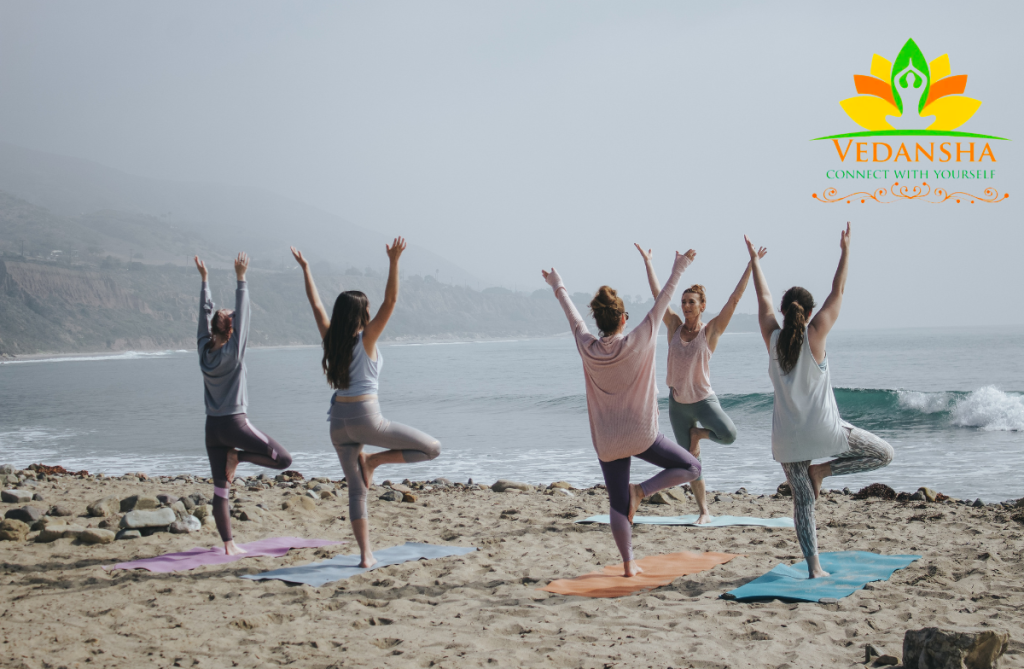
7. Connect with Nature
Take a moment to connect with the natural world around you. Listen to the sounds of the waves, feel the warmth of the sun on your skin, and sense the sand beneath your feet. Be fully present in the moment, grounding yourself in the environment.
8. Begin Your Practice
Start with gentle warm-up poses to ease into your practice. Simple stretches and deep breathing can help you relax and prepare for more advanced asanas (poses).
9. Mindful Movement
As you move through your yoga routine, practice mindfulness. Pay close attention to your breath, the sensation of the sand, and the sounds of the beach. Let the setting enhance your awareness.
10. Cooling Down
Finish your practice with relaxation poses like Savasana (Corpse Pose) or a seated meditation. Allow the soothing energy of the beach to envelop you.
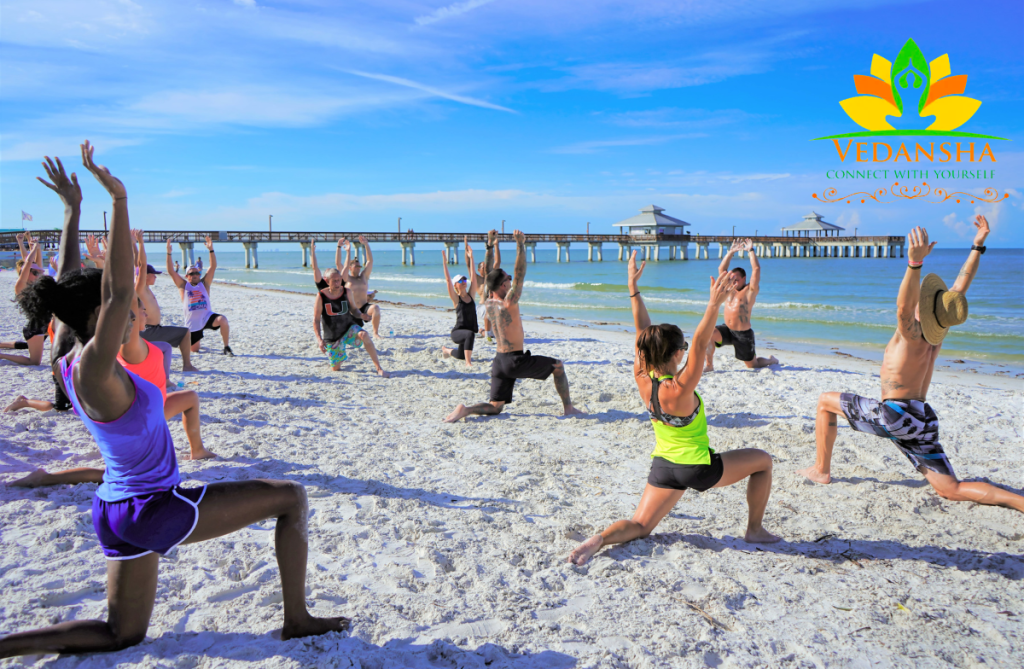
Tips and Precautions
- Time It Right: Early morning or late afternoon is the best time for beach yoga to avoid the strongest sun and crowds.
- Water: Stay hydrated. Bring a water bottle and take sips between poses.
- Breathe: Emphasize deep, conscious breathing to sync with the calming rhythm of the waves.
- Balancing Poses: Be cautious with balancing poses on uneven sand to prevent ankle injuries.
- Respect Nature: Avoid disturbing local wildlife, such as nesting birds or sand dunes.
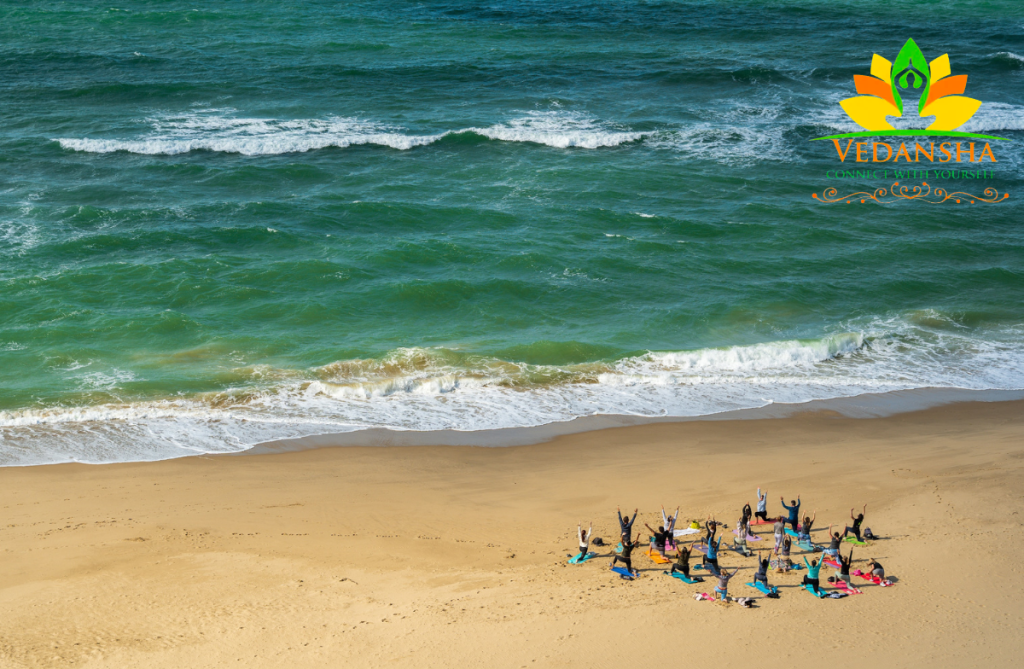
Beach Yoga Techniques
1. Sun Salutations
Sun Salutations, also known as Surya Namaskar, are an excellent way to begin your beach yoga practice. This sequence of poses not only warms up your body but also connects your breath with movement, allowing you to sync with the natural rhythm of the beach. The rise and fall of the waves can complement your breath, creating a harmonious experience.
2. Warrior Poses
Warrior poses are a perfect fit for beach yoga. As you move into Warrior I, II, and III poses, you can imagine yourself harnessing the strength of the ocean. These poses promote balance and confidence while allowing you to feel grounded and powerful amidst the beach’s serenity.
3. Balancing Poses
Balancing poses are fantastic for beach yoga, but be mindful of the sand’s uneven surface. Poses like Tree Pose and Half Moon Pose can challenge your balance and stability while fostering a deep connection with the natural elements around you. The sand under your feet can be both supportive and unpredictable, making your balance even more essential.
4. Seated Meditation
Take a moment during your beach yoga session to sit quietly by the water’s edge. As you meditate, absorb the soothing energy of the beach. Let the sound of the waves and the scent of the sea become part of your meditation practice. This connection with nature can provide deep inner peace and relaxation.
5. Gentle Backbends
Gentle backbend poses, like Cobra Pose or Bridge Pose, can be more invigorating when practiced on the beach. The open sky and the rhythm of the waves behind you can encourage you to lift your heart and stretch deeper, promoting a sense of freedom and expansion.
6. Savasana by the Shore
Finish your beach yoga practice with Savasana, also known as Corpse Pose. Lie down on your mat or towel, close your eyes, and allow the soothing sounds of the beach to wash over you. This final relaxation can be profoundly calming and help you release any remaining tension.
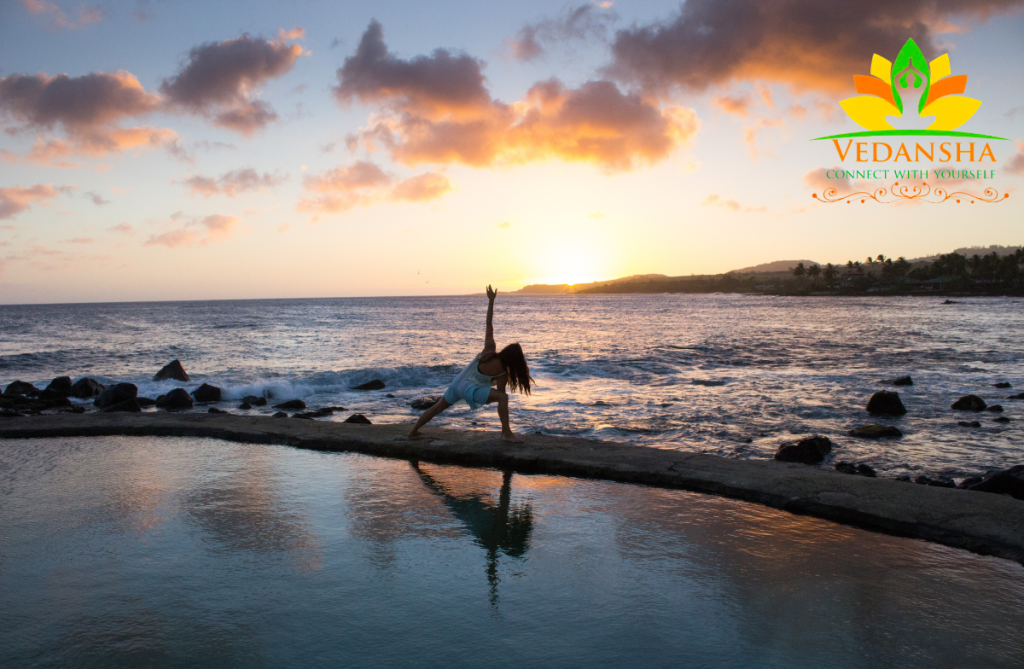
Benefits of Beach Yoga
1. Sensory Serenity
The beach provides a sensory-rich environment. The soothing sound of the waves, the touch of warm sand underfoot, and the scent of the sea breeze create a calming and grounding atmosphere. Practicing yoga amidst these elements deepens your connection to your senses and enhances your mindfulness.
2. Stress Reduction
The tranquil ambiance of the beach is a powerful stress reducer. As you move through your yoga routine, the gentle sounds of the waves and the open expanse of the horizon help release tension, soothe your nerves, and promote relaxation. Beach yoga is a sanctuary of calm in our often hectic lives.
3. Physical Fitness
The resistance of the sand challenges your muscles in new ways, making your beach yoga practice more physically demanding than traditional yoga. It increases the intensity of your workout, helping you improve strength, balance, and flexibility.
4. Connection with Nature
Practicing beach yoga fosters a profound connection with the natural world. You’ll feel the warm sun on your skin, the breeze in your hair, and the earth beneath your feet. This connection with nature can provide a deep sense of well-being and calm, helping you appreciate the beauty and harmony of the world around you.
5. Mindfulness and Relaxation
Beach yoga encourages mindfulness, drawing your attention to the present moment. The repetitive rhythm of the waves and the soothing environment help you let go of stress and distractions, entering a state of deep relaxation.
6. Improved Sleep
The calming effects of beach yoga can positively impact your sleep patterns. A practice by the beach can help you relax and unwind, leading to more restful nights.
7. Sunlight and Vitamin D
Exposing your skin to sunlight during early morning or late afternoon beach yoga sessions can provide essential vitamin D. This can boost your mood and energy levels while supporting overall health.
8. Embracing Serenity
The beach is a place of serenity and tranquility. By practicing yoga in this setting, you invite serenity into your life. You’ll find inner peace, inner strength, and a renewed sense of purpose.
9. Grounding and Earthing
The act of physically touching the earth (in this case, the sand) has grounding and earthing benefits. It connects you to the Earth’s energy, helping you release stress and improve your overall well-being.
10. Connection with Others
Beach yoga often attracts like-minded individuals who appreciate the peace and beauty of the shoreline. It provides an opportunity to connect with others who share your love for yoga and nature

Beach Yoga Diet Plan
Morning
- Start with a glass of water.
- Have a light breakfast with fruit, yogurt, and granola for sustained energy.
Lunch
- A hearty beach salad with fresh vegetables and lean protein (e.g., grilled chicken or tofu).
- Stay hydrated with water or coconut water.
Evening
- Enjoy grilled seafood or plant-based options along with a variety of grilled vegetables.
- For dessert, savor fresh fruit like watermelon or a simple fruit salad.
Foods to Avoid
- Heavy, greasy foods that may cause discomfort during your practice.
- Excessive alcohol, which can lead to dehydration.
- Sugary snacks that can cause energy spikes and crashes.
Conclusion
Beach yoga is a unique and rejuvenating way to enrich your yoga practice. By connecting with the natural elements and harmonizing your mind and body, you can achieve a deeper sense of serenity and wellness. Whether you’re an experienced yogi or a beginner, the beach offers an ideal backdrop for your journey toward inner peace and physical fitness. So, roll out your mat by the shore, breathe in the salty air, and let the waves inspire your practice.
FAQs
1. Can I practice beach yoga as a beginner?
Absolutely! Beach yoga is suitable for all levels. Just adapt poses to your ability and enjoy the experience.
2. Should I worry about sand getting on my mat?
Sand is part of the beach experience. Brush it off your mat after practice or use a dedicated beach towel.
3. Is beach yoga safe for children?
Yes, but keep an eye on them, especially near the water. Simple poses can be fun for kids and encourage physical activity.
4. What do I do if the beach is crowded?
Find a quieter spot or practice during off-peak hours to enjoy the tranquility of the beach.
5. Can I practice beach yoga at any beach?
Most beaches are suitable for yoga, but check local regulations and environmental guidelines before practicing. Respect the beach’s unique ecosystem and rules.

